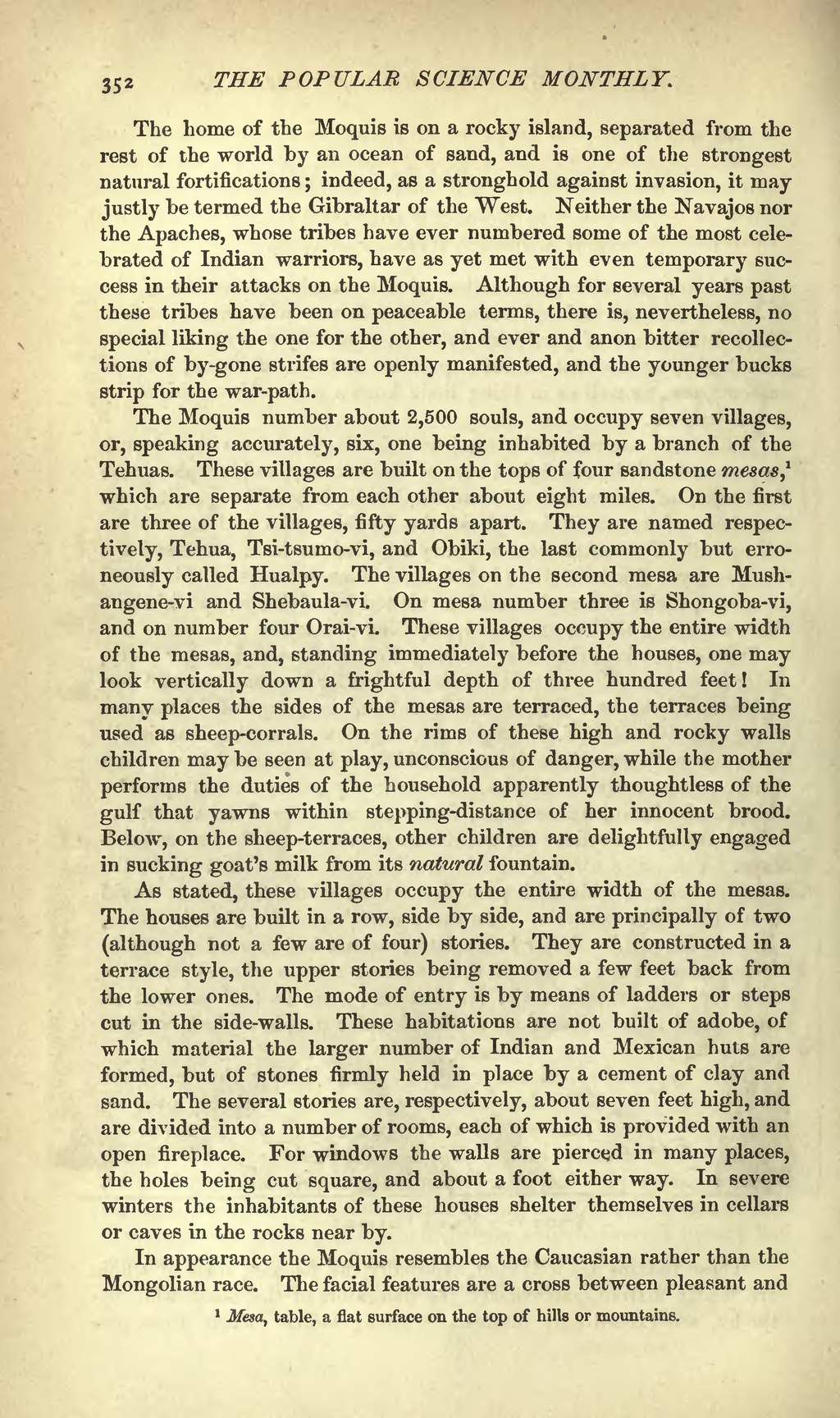The home of the Moquis is on a rocky island, separated from the rest of the world by an ocean of sand, and is one of the strongest natural fortifications; indeed, as a stronghold against invasion, it may justly be termed the Gibraltar of the West. Neither the Navajos nor the Apaches, whose tribes have ever numbered some of the most celebrated of Indian warriors, have as yet met with even temporary success in their attacks on the Moquis. Although for several years past these tribes have been on peaceable terms, there is, nevertheless, no special liking the one for the other, and ever and anon bitter recollections of by-gone strifes are openly manifested, and the younger bucks strip for the war-path.
The Moquis number about 2,500 souls, and occupy seven villages, or, speaking accurately, six, one being inhabited by a branch of the Tehuas. These villages are built on the tops of four sandstone mesas,[1] which are separate from each other about eight miles. On the first are three of the villages, fifty yards apart. They are named respectively, Tehua, Tsi-tsumo-vi, and Obiki, the last commonly but erroneously called Hualpy. The villages on the second mesa are Mushangene-vi and Shebaula-vi. On mesa number three is Shongoba-vi, and on number four Orai-vi. These villages occupy the entire width of the mesas, and, standing immediately before the houses, one may look vertically down a frightful depth of three hundred feet! In many places the sides of the mesas are terraced, the terraces being used as sheep-corrals. On the rims of these high and rocky walls children may be seen at play, unconscious of danger, while the mother performs the duties of the household apparently thoughtless of the gulf that yawns within stepping-distance of her innocent brood. Below, on the sheep-terraces, other children are delightfully engaged in sucking goat's milk from its natural fountain.
As stated, these villages occupy the entire width of the mesas. The houses are built in a row, side by side, and are principally of two (although not a few are of four) stories. They are constructed in a terrace style, the upper stories being removed a few feet back from the lower ones. The mode of entry is by means of ladders or steps cut in the side-walls. These habitations are not built of adobe, of which material the larger number of Indian and Mexican huts are formed, but of stones firmly held in place by a cement of clay and sand. The several stories are, respectively, about seven feet high, and are divided into a number of rooms, each of which is provided with an open fireplace. For windows the walls are pierced in many places, the holes being cut square, and about a foot either way. In severe winters the inhabitants of these houses shelter themselves in cellars or caves in the rocks near by.
In appearance the Moquis resembles the Caucasian rather than the Mongolian race. The facial features are a cross between pleasant and
- ↑ Mesa, table, a flat surface on the top of hills or mountains.
